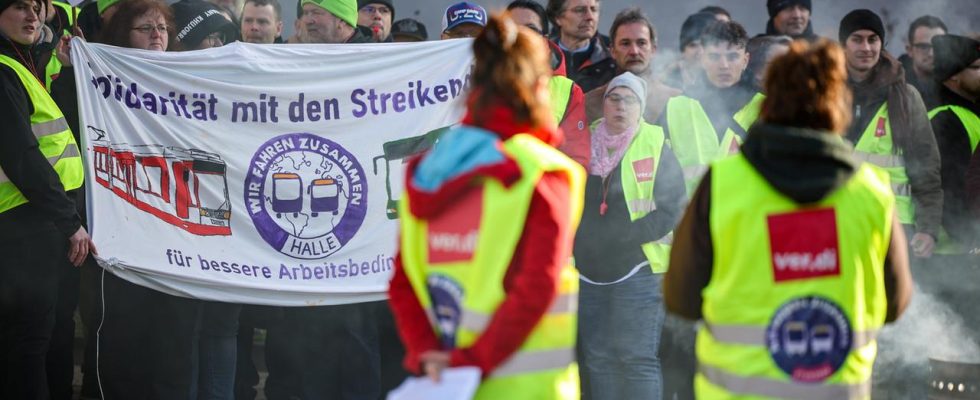“Fridays for Future” and ver.di are joining forces in the fight for better public transport. Today there is a joint strike day. What do both sides gain from the cooperation?
He never thought he would work with “Fridays For Future,” says Gökhan Sert. The 35-year-old is a bus driver for the Cologne public transport company.
Although he has always found the goals of the climate movement to be right, he was not involved himself. That changed about a year ago. Since then, Sert has regularly interacted with the climate activists, for example for joint social media videos.
“I actively pursue climate protection through my job”
Bus driver Sert is active at ver.di. The union and the climate protectors – from his point of view, they fit together perfectly. “I actively pursue climate protection through my job,” he says. “I’m also the father of two little girls, and I want to leave them a world worth living in.”
“Fridays For Future” and ver.di have declared today, March 1st, a climate strike day. Joint actions are planned at more than a hundred locations across the country.
It is not the first time that both groups have taken to the streets together. Almost exactly a year ago, climate activists joined the union strikes in local public transport, and further actions followed.
Alliance has strategic reasons
The collaboration doesn’t surprise protest researcher Simon Teune. “There are major overlaps in the interests between these two groups,” says Teune, who works at the Berlin Institute for Protest and Movement Research, among other things. Both groups repeatedly emphasize how important a strong public transport system with good working conditions is for the transport transition.
From the protest researcher’s point of view, the alliance has other strategic reasons. The number of active participants in “Fridays For Future” has fallen in recent years, but the cooperation with ver.di means that forces can now be pooled. In addition, through the alliance with workers in the transport sector, the climate movement can counteract the impression that climate protection is something elitist, said Teune.
Together, more pressure on politics
In this context, Darya Sotoodeh, spokeswoman for “Fridays For Future”, draws a positive balance of the cooperation so far: “We have stood against politicians’ attempts to divide climate protection and social justice and shown that both can only work together.”
Ver.di, in turn, benefits from the attention that “Fridays For Future” can generate on the street and in social networks. “Our main goal is to convince the federal and local governments that investments need to be made in public transport,” says bus driver and ver.di member Gökhan Sert. He hopes that cooperation with “Fridays For Future” can put more pressure on politicians.
Bus driver Gökhan Sert is involved with ver.di and says that his job actively promotes climate protection.
Door opener for further collaborations?
Protest researcher Teune believes that cooperation between climate activists and trade unions could possibly be expanded. In public transport, the common interests are obvious. “But this could also open the door for future collaborations with other unions that, at first glance, might not fit in well with ‘Fridays For Future’,” said Teune.
He is thinking, for example, of the metal industry. A lot of CO2 is currently being emitted there, but a conversion towards green technologies is also imminent.
“Fridays For Future” is open to this. When asked, they also want to join forces with other parts of society. There are already local contacts with other unions such as IG Metall and the railway workers’ union EVG.

